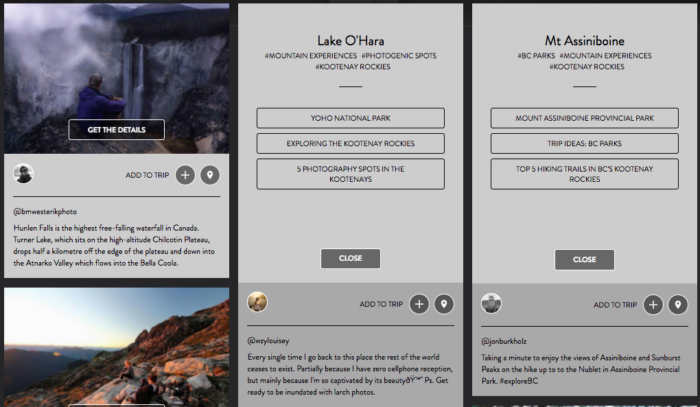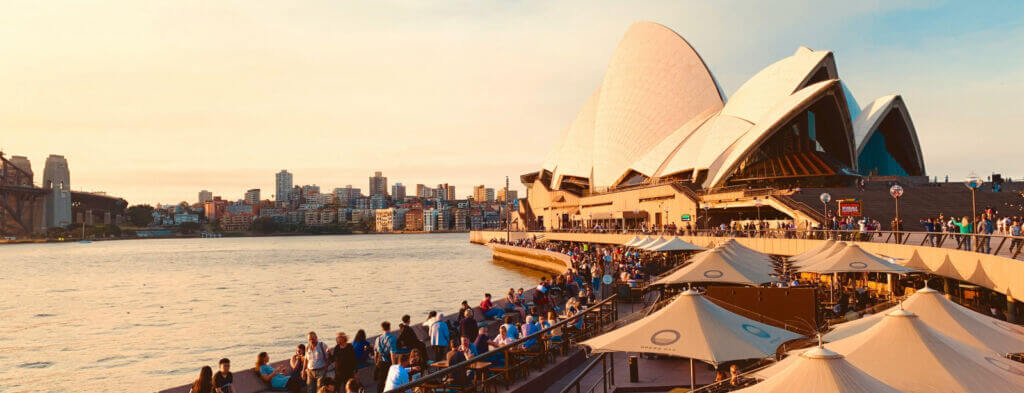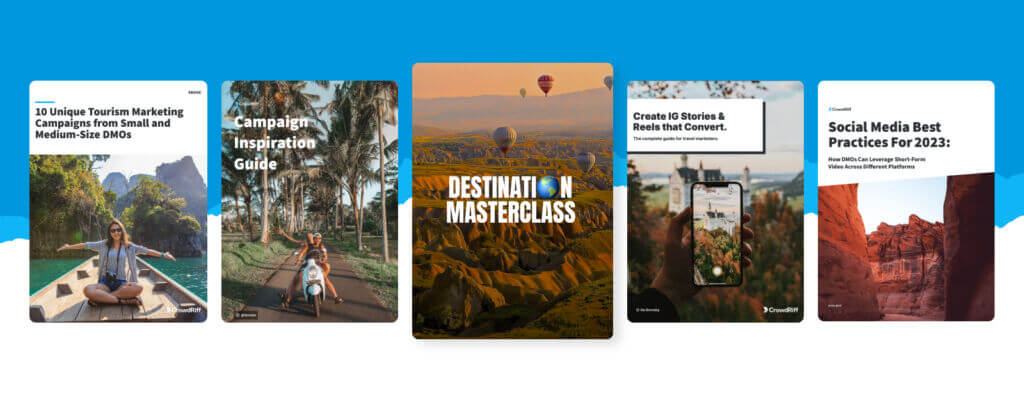 Destination British Columbia is one of the largest and most respected DMOs in the tourism industry and a perfect example of using UGC for tourism.
Destination British Columbia is one of the largest and most respected DMOs in the tourism industry and a perfect example of using UGC for tourism.
For good reason too — backed with a following of 430k users on Instagram, and 153k on Twitter, they’ve proven that it pays off to invest in social media.
An incredible project that’s come out of their success on social is the launch of their visual trip planner, the BC Explorer, which is powered by Instagram photos from the hashtag #ExploreBC.
As of today, #ExploreBC has been used nearly 4.6 million times. That has given them a growing collection of close to 9 million photos in their asset library that could potentially be used for the BC Explorer (and for their other marketing channels).
How does the BC Explorer work?
The BC Explorer shows curated user-generated photos from this hashtag, that you can scroll through to find inspiration for places to go and things to do in British Columbia.
Each photo is clickable and leads to more information (e.g. linking to the relevant businesses, visitor guides, etc.). You can also save the locations from each photo onto a built-in map.
What can other DMOs learn from this example of using UGC for tourism?
Last week, we had the pleasure of hosting a webinar with Julia Crawford and Ryan Leung, from the team at Destination BC. We wanted to dig deeper on how Destination BC built up their social media strategy and leveraged user-generated content (UGC) to make the BC Explorer a success — and share these takeaways with you.
Here are 3 important lessons learned from our joint webinar:
1 | Encourage and engage social advocates
In May 2014, Destination BC had about 15,000 followers — and one year later they had 100,000.
The growth of their social has always been about UGC, and keeping social media a two-way conversation.
From the beginning, the vision for their Instagram was to curate and repost user-generated photos.
“We were tapping into the pool of users who were already engaged in talking about our destination. We hoped that we could help fuel and leverage that conversation even further.”
— Julia Crawford, Social Media Specialist at Destination BC
A strategy that really fuelled their growth on Instagram was sourcing highly engaged users to do “weekly takeovers” of their feed. That means that instead of posting themselves, they’d let a user post and engage with their community for a week.
It was through jumping into existing conversations and encouraging their social advocates that they amplified the #ExploreBC hashtag from 10,000 when they first adopted it, to nearly 2 million now.
2 | Provide actionable inspiration
When you’re scrolling through Instagram, and see a photo of taken inside a quaint coffee shop — you’re struck with a desire to go there. And that’s the same with that photo from the top of a certain mountain, or at the edge of a lake somewhere.
The BC Explorer was the response to that inclination. Not only can people find inspiration, but they can act on it too.

“They’ll go and collect the photos they’re interested in and these links will help them take that inspiration to the next level.”
— Ryan Leung, UX Specialist at Destination BC
An issue Destination BC wanted to tackle was that though they could provide aspirational photos on their site, if they didn’t direct their visitors’ inspiration somewhere, they’d leave the site to start the planning process elsewhere.
With the BC Explorer, visitors can start and continue planning on the DMO site, or click through to the websites of the local businesses and tourism partners, when they click “GET THE DETAILS”.
Adopting the practice of “actionable inspiration” means sharing a next step (like a link) along with your photos so that people can act on their motivation.
These are opportunities to engage your visitors and direct them to your tourism partners.
3 | User-generated content for tourism can go further than social media
Like Julia from Destination BC shared, UGC has always been a pillar in their social media strategy. But she also realizes that it can be used for so much more.
“We went from using within a purely social space to integrating it into our overall consumer marketing campaigns: out-of-home advertising, point of sale materials, influencer marketing campaigns, and using it to develop our digital visitor strategy.”
— Julia Crawford, Social Media Specialist at Destination BC
UGC really speaks to people: 70% of consumers value recommendations from their peers over polished content from brands themselves.
Like Destination BC, you can take user-generated content to the next level. You can incorporate it on your website, in your print ads, or even something as inventive as a visual trip planner, like the BC Explorer.
Just because user-generated content typically starts on social media, doesn’t mean it needs to stay there.
Header Photo Creds: @jtiezy











